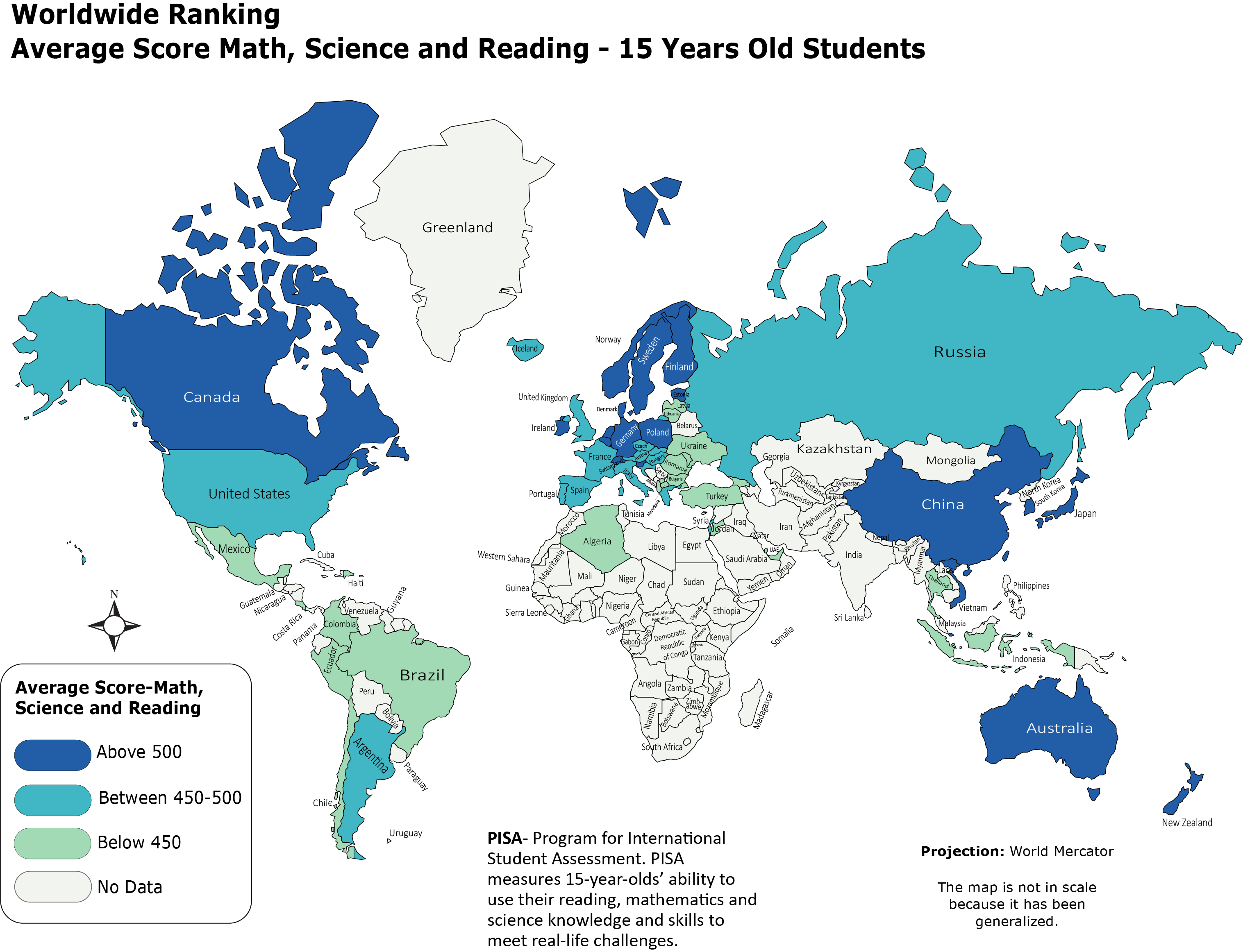Why Do Students Struggle in Math?
Over the past few years, math has got a bad reputation among some of the younger generation and maybe the same among the adults. The saying of, "I am bad at math or I am not a math person"
has somehow become a badge of honor. In some cases we do not only hear the myth of "I am bad at math", but rather we are recognizing it by another myth “It's ok to be bad at math”. It’s easy and fun to say I am not a math person,
or I am bad at math, but did you think about the consequences of this among our younger crowds (midle/high students)? I think these myths only strengthens stududents' growing math anxiety.
In this project (website) I have analyzed, compared and presented math, science and reading scores of the high/middle school students worldwide, then based on my findings,
I have recommended a top 12 free resources (websites) where students can practice and improve thier math skills. It's going to be a great resources page for middle and high school students.
The Organization for Economic Cooperation and Development [OECD] is a global policy organization that includes the United States and about half of Western Europe countries.
It administers international comparison tests, called Programme for International Student Assessment (PISA), for 15 year-old students in Mathematics, Science and Reading.
I have visualized PISA's 2015-2016 report in the below map.
However, the PISA-2018 report indicates that the U.S students scored slightly better in all three areas (Reading, Math and Science) compared to the previous report (2016), while statistcally insignificant as a measure of imrovement. According to neaToday "the increase was enough to push the United States slightly above the OECD average in reading and science, while still falling below in math. Their scores were similar to those of students in Australia, Germany, New Zealand, Sweden and the United Kingdom in at least two of these three subjects." For more details see the figure below or click here to see PISA's 2018 report.

For more details about the score of all nations (70) included in the PISA-2018 report, please click here
Why U.S High/Middle School Students Scored Below the Average in Math?
Let's have a look at the Nation's Report Card (NAEP) to compare each state performace with the national average (281).
The National Assessment of Educational Progress (NAEP) is the largest continuing and nationally representative assessment of what U.S. students know and can do in various subjects. NAEP is a congressionally mandated project administered by
the National Center for Education Statistics (NCES), within the Institute of Education Sciences (IES) of the U.S. Department of Education. Source: Wikipedia.
The thematic map above tells us that 21 out of 50 States performed significantly above the national public (281), while there isn’t a significant difference from the national public for 14 of them, and 15 out of 50 performed significantly lower than the national public.
If we compare the 2019 mathematics performance with 2013, it looks like the trend is negative, so there is need for more effort from both students and educators to change the trend from negative to positive. For more details see below figure or
click here.
Let's compare middle school students' math performace from 2003 to 2019 nationwide.

The above graphic tells us that the "Performed significantly higher than National public" is decreasing and "Not significantly different than National public" is increasing, while the Performed significantly lower than National average retmains nutural. This means our teens need more and better support to improve their math skills.

